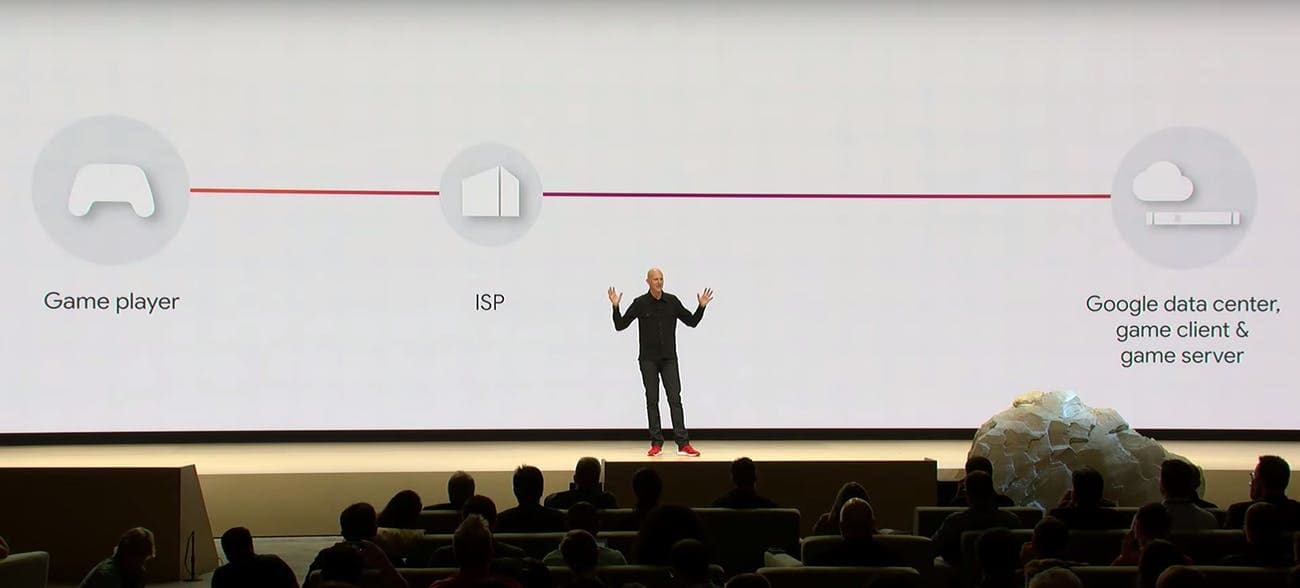Earlier this week, Google presented their grand vision of a gaming conglomerate at the Game Developers Conference (GDC). Stadia combines development tools, content creators, and seamless gameplay to set a new standard for gaming by the end of the year.
What is Stadia?

Previously tested as “Project Stream,” Stadia is Google’s cloud gaming platform. Gamers will be able to stream high-quality AAA games with 4K resolution at 60 fps (frames per second) without a console. Users will be able to connect to games using Pixel devices, the Chrome browser, or a Chromecast. TVs, phones, tablets, laptops, and desktops can all be connected through Stadia. Google’s vast network of data centers will act as the platform for new creative tools and distribution directly to gamers.
Although the service won’t launch until later this year, here are three ways in which Stadia could change gaming:
1. Cross-device play
Mintel research on attitudes toward gaming shows that nearly half of gamers say they are interested in gameplay that would cross multiple platforms. Games have been ported to different platforms since the console wars began, but Stadia claims to make the transition between devices seamlessly. The Stadia demonstration had a player pausing a game on a Pixel phone and picking up from the same moment on a Chromecast-enabled TV seconds later. The Stadia Controller will power the streaming service by using WiFi signals to connect directly to the data centers powering the game in order to lower latency.
2. No barrier between gameplay and Youtube
The viewing of gameplay has been an integral component of gaming growth over the past few years. One-quarter of adults say they have watched a game live stream, pre-recorded gameplay video, or eSports competition. YouTube is one of the most popular destinations for gaming content, having logged 50 billion hours of gaming videos viewed in 2018. Stadia will integrate gameplay and game viewing more easily in a few ways:
- A button on the Stadia Controller allows gamers to instantly record and stream their gameplay to YouTube.
- YouTube gaming videos will have a button at the end to play the featured game instantly.
- The Crowd Play feature allows viewers watching a live stream to be able to wait in line to play the game with or against the streamer broadcasting.
- Players can use Google Assistant to connect them to video content that can help them in the middle of gameplay, rather than needing to navigate away from the game itself.
3. Evolving infastructure
Gaming brands have been investing heavily in developers for years by encouraging creative coders to add and expand to a platform. By launching Stadia at GDC, Google has made a similar promise to give developers the tools they need to contribute to the ever-growing gaming ecosystem. Developers can use a suite of products to help their games accommodate to Stadia. They can also join Stadia Games and Entertainment: Google’s own game studio for Stadia-exclusive titles. A machine learning style tool was also introduced that allows developers to apply their own design style to Stadia games by dropping a custom image into the video frames of a game.
Stadia’s cloud structure allows for more flexibility which gives developers more room to redefine what makes a game. The platform can constantly adapt to the content populating it, rather than having the developers fit the confines of the platform.
What we think
Google is not the only tech brand with cloud gaming ambitions. Microsoft, Sony, Amazon, NVIDIA and Verizon are among some of the groups working on making the “Netflix of gaming.” Google also faces stiff competition from different components of the Stadia ecosystem. Valve’s Steam is an established platform for developers to place their games. Twitch has tens of millions of daily active users viewing live streams. Microsoft, Sony, and Nintendo have consistently dominated the console market.
However, Stadia appears to have integrated all components of the gaming market into one integrated product. Stadia’s intuitive and flexible design effectively combines Google’s assets to make toggling between gameplay and viewing a smooth experience.
Google has not announced a launch date for Stadia, but more details about titles and features are expected to come this summer. In the meantime, the ambition with which Google is staking its claim in the gaming market solidifies gaming’s place as an essential component of the media landscape. When it does launch, Google’s “gaming for everyone” mission may be difficult to match.








































